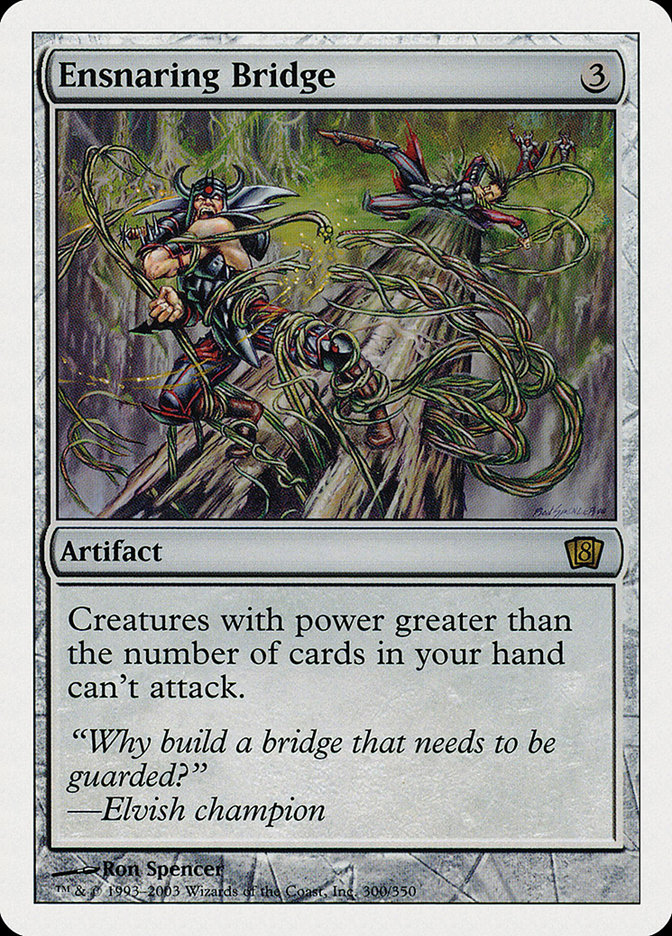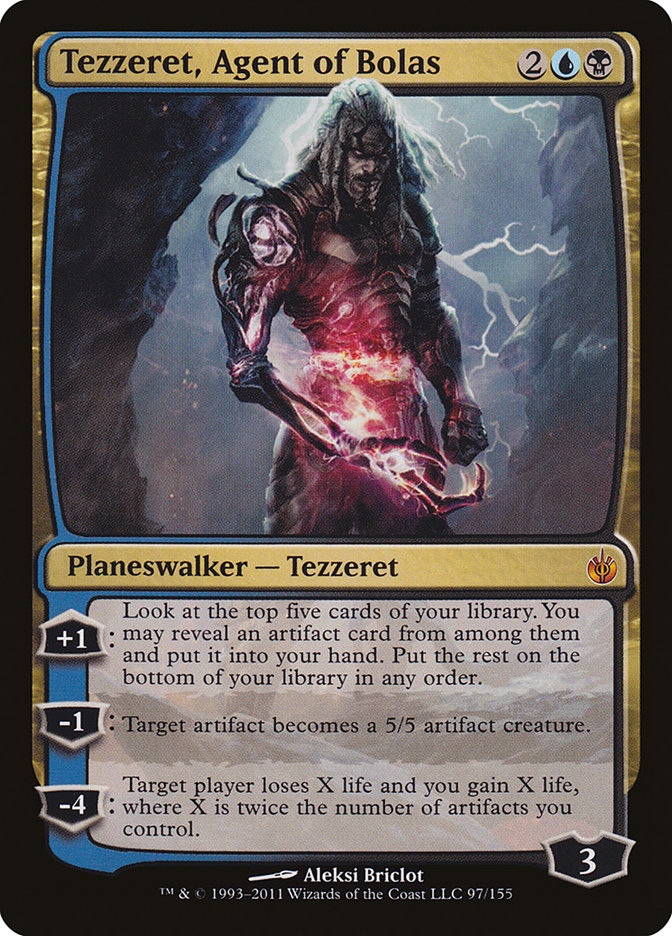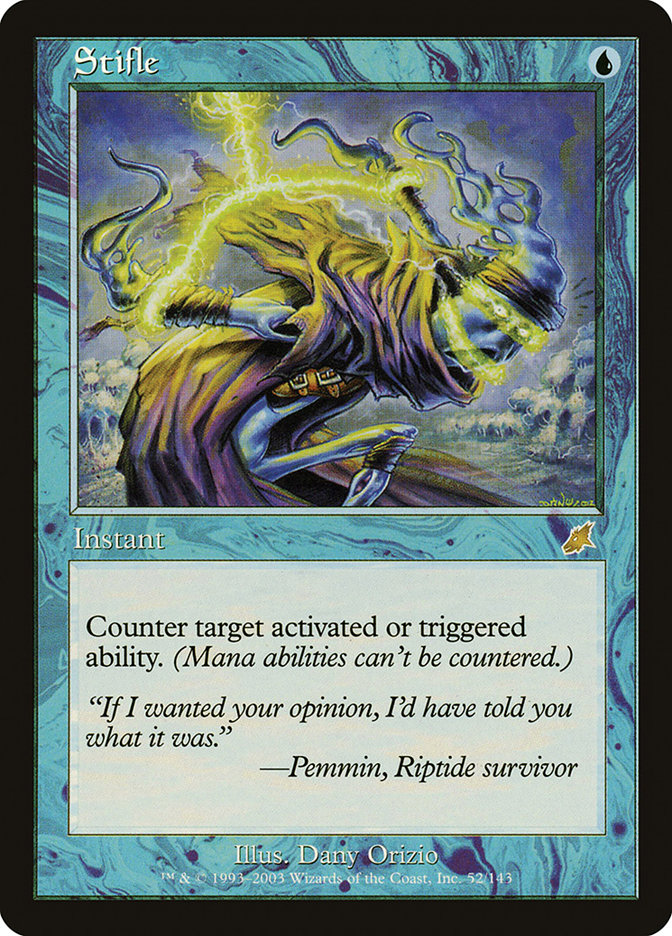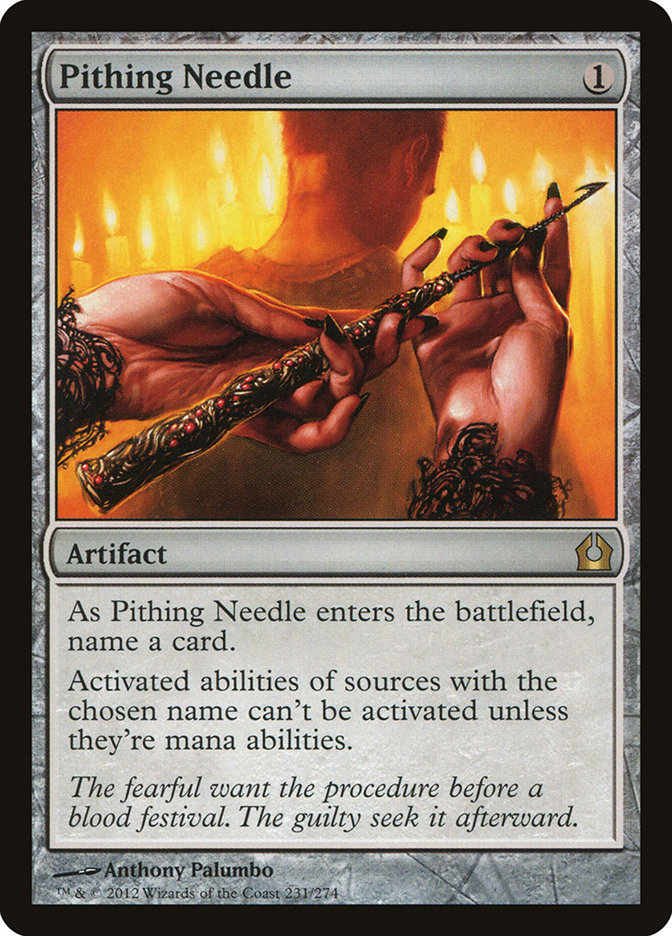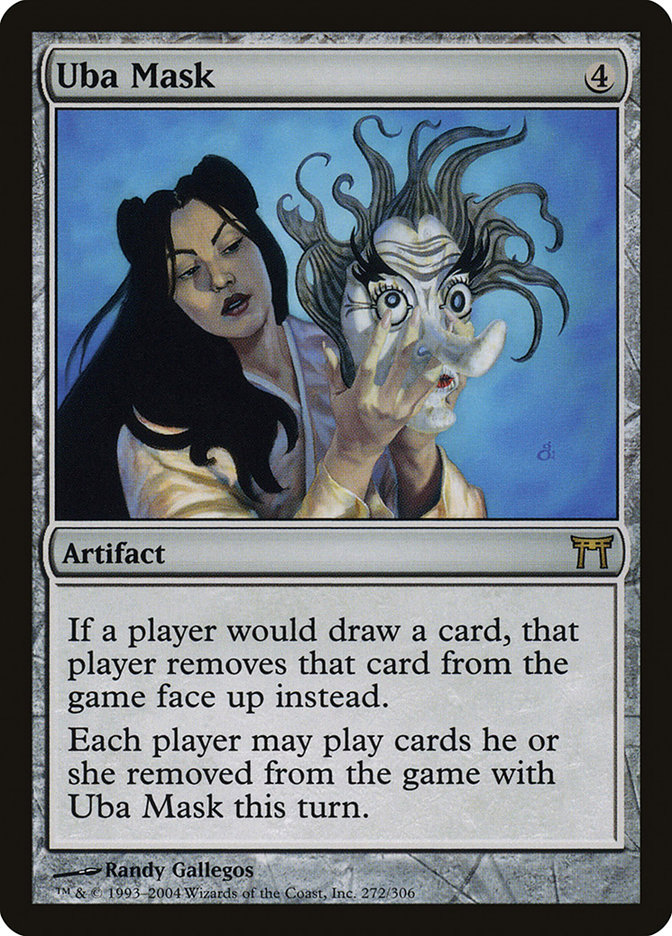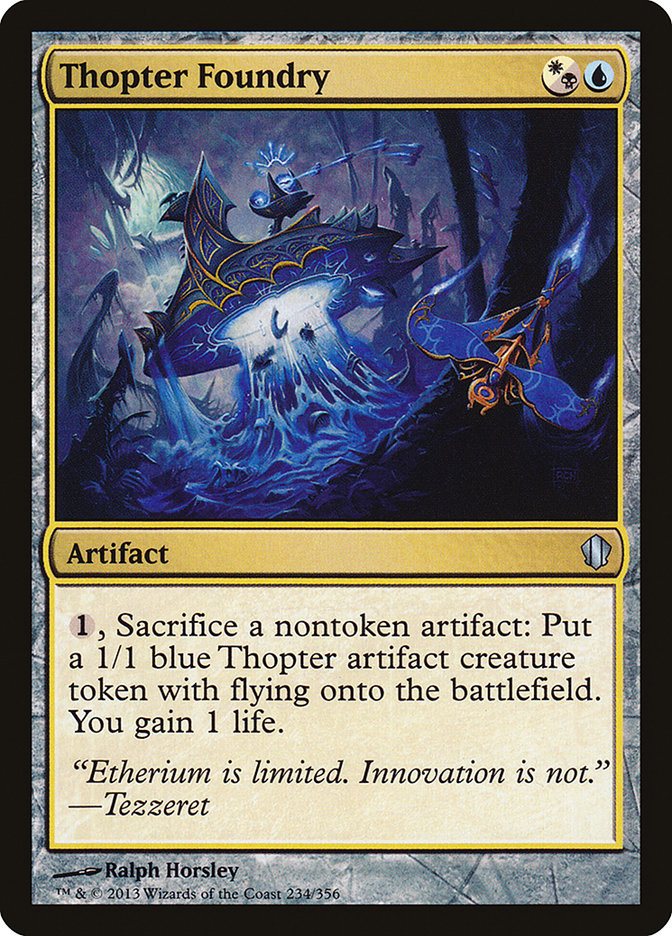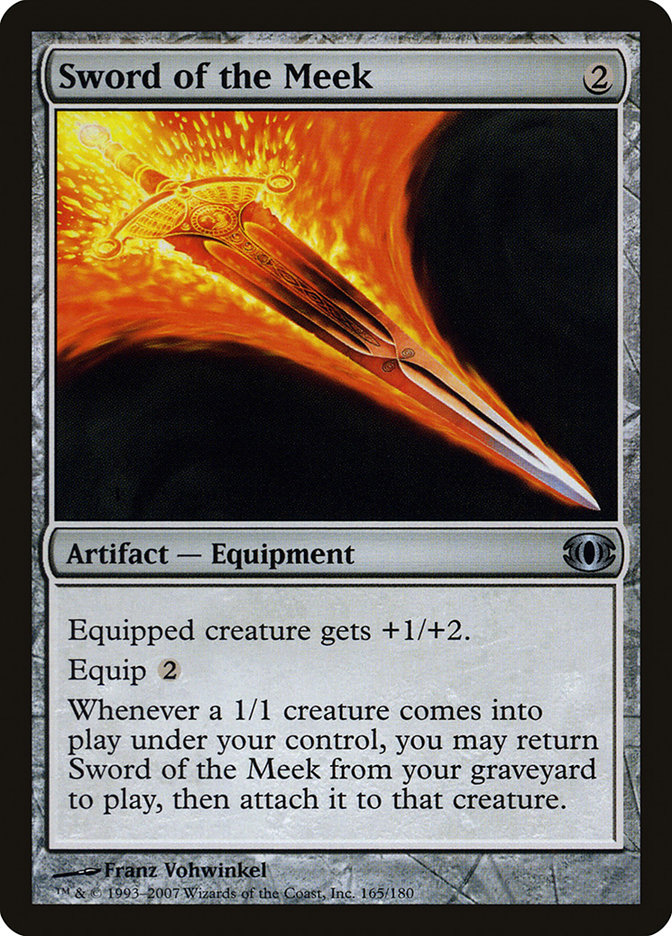If you watched #SCGMKE this past weekend, you’ll know where my title comes from. If you didn’t, you missed another great show and the chance to hear perennial commentator Patrick Sullivan talk about how Mox Opal is the most powerful card in Legacy that sees essentially no play.
I’m working on changing that. I know you all want to see some new lifeblood in Legacy. You see, last week I asked all of you what you’d like to see me write about. The results were clear as day—you want to see more brews.
I don’t blame you. Between Delver of Secrets, Deathrite Shaman, True-Name Nemesis, and Show and Tell, Legacy deckbuilders are in a perpetual bind of losing to something. Fair creature decks are the worst they’ve ever been, and midrange decks are the best they’ve ever been. There’s even more discard and countermagic in the format than usual, and there are lots of angles that are harder to attack nowadays.
All of these factors make Legacy an excellent format to sit down and figure out a new angle of attack. Legacy play rewards two distinct styles of deck: a pile of 60 absurdly powerful cards that seek to beat each opponent by having higher-quality cards in their deck or an interwoven mesh of situationally powerful cards that seek to create and exploit a difficult situation. Today’s deck falls comfortably into the latter category.
An example of the first is here:
Creatures (10)
Lands (19)
Spells (31)

And here:
Creatures (8)
Planeswalkers (2)
Lands (19)
Spells (31)

And here:
Creatures (12)
Lands (18)
Spells (30)

All of these decks are piles of powerful cards and deck manipulation. Beating these decks is difficult because they can contain a broad range of cards and have many powerful filtering spells available to find a given card at the appropriate time. As you will see, there are situations where even these decks can be boxed in and locked out of the game. Therein lies the goal of the other class of decks.
A good example of the second type of deck is this:
Creatures (18)
- 3 Goblin Welder
- 4 Imperial Recruiter
- 1 Jaya Ballard, Task Mage
- 3 Simian Spirit Guide
- 1 Magus of the Moon
- 4 Painter's Servant
- 2 Phyrexian Revoker
Lands (19)
Spells (23)

How do you beat a deck with a ton of soft countermagic and twenty nonbasic lands? With Simian Spirit Guide, Lotus Petal, two-mana lands, and five Blood Moons of course.
How do you beat a deck that consistently attacks with a 7/7 Yawgmoth’s Bargain or 15/15 Coalition Victory on turn 4? Have six Red Elemental Blasts to attack their consistency and finish them off with a pair of Ensnaring Bridge.
The trick to building a good metagame deck is finding a card that beats a lot of decks on its own. Right now we actually know what that card is:
It’s difficult to find a maindeck solution to a resolved Ensnaring Bridge in the following decks:
Creatures (12)
Lands (18)
Spells (30)

Creatures (7)
Lands (18)
Spells (35)

There are many more decks whose only solution to an Ensnaring Bridge is Liliana of the Veil or Jace, the Mind Sculptor. Let’s attack all of those.
The first step is to figure out how we’re going to win games if we’re not, you know, attacking with sizeable creatures. A decent starting point would be to win with a planeswalker since Ensnaring Bridge stops creatures from attacking at all, whereas cards like Ghostly Prison and Propaganda protect you but not your friends.
It would be ideal if our win condition also synergized with the rest of our deck. Fortunately, we don’t have to go far to find a planeswalker with an ability that synergizes with Ensnaring Bridge:
Bridge protects Tezzeret, who ticks up until you have ten artifacts in play. From there you ultimate your Tezzeret and kill them without ever attacking. Sounds simple, right?
Well, except for everything that could go wrong. What are the obstacles to this plan?
How do we beat these cards?
Abrupt Decay is the biggest threat to Ensnaring Bridge, and we don’t have a lot of great answers to it. Spellskite is the only really good one, but if we’re trying to make their creature removal worse by not playing creatures, having Spellskite is pretty loose.
Lightning Bolt and Stifle are both vulnerable to Chalice of the Void, although it is worth noting that Spellskite is a house against RUG Delver and U/R Delver.
Pithing Needle is a weak answer that we can trump with any reasonable removal spell. I’m not too worried about this one.
We could also juke most of these cards by playing a backup win condition, but we’re getting ahead of ourselves a little bit.
Before we go any further, I should note that I’ve been keeping four copies of Sensei’s Divining Top and four copies of Lion’s Eye Diamond in the back of my head as potential inclusions, so any additions to the deck that synergize with those cards are more likely to make the cut.
The reason why I want to play with Sensei’s Divining Top is pretty straightforward—it’s one of the best one-mana plays in Legacy for any control deck, lets you stay hellbent behind an Ensnaring Bridge by allowing you to hit your land drops, and provides important early game manipulation.
The reason why I want to play with Lion’s Eye Diamond is less straightforward, but I’ll give it a shot. If you can create game states where you can minimize its drawback, it’s a four-of Black Lotus in Legacy. My thesis—and I’m fine being wrong here—is that a four-of midgame Black Lotus is still really good. Since Ensnaring Bridge already incentivizes you to play Magic with an empty hand, it stands to reason that Lion’s Eye Diamond is a good fit, as its drawback doesn’t exist if your hand is empty. Voila—synergy!
So we have Ensnaring Bridge plus Tezzeret, Agent of Bolas and Sensei’s Divining Top plus Lion’s Eye Diamond. What does our mana look like for this?
For starters, we’re not playing Brainstorm. I know it sounds weird to say “let’s talk about mana” and then immediately jump into a discussion of how we’re not going to play a blue instant, but I promise you that one-mana card draw is a part of any mana base. Brainstorm asks you to play a lot of dual lands and fetch lands and thereby indirectly incentivizes you to play more colors. We’re not going down that road.
If you read my article on the changes to the legend rule, you already know that I think Mox Opal and Brainstorm exist on opposite sides of a theoretical Legacy mana base construction spectrum. Mox Opal asks you to play with artifact lands and cheap artifacts so that you can accelerate into powerful spells early. Brainstorm asks you to keep cards in your hand and play (nonartifact) fetch lands and dual lands. We’re interested in this sequence:
Seat of the Synod, Sensei’s Divining Top, Mox Opal.
Not this sequence:
Island, go. Brainstorm, fetch land, go.
Besides, as I mentioned earlier, Brainstorm wants you to have cards in your hand to put back. This deck wants to go hellbent early and stay that way. At that point Brainstorm is a Sensei’s Divining Top activation plus Obsessive Search—hardly the Brainstorm we know and love/hate. No thanks.
So our mana base is artifact lands and what exactly? We should figure out if we’re “browner” (more artifacts, fewer colored spells, leading to more Ancient Tomb and City of Traitors) or “Dimirer” (more colored spells, fewer artifacts, leading to more Underground Seas or River of Tears budget depending).
Our spells so far:
4 Sensei’s Divining Top
4 Tezzeret, Agent of Bolas
4 Ensnaring Bridge
I want to add one more bit of spice to this deck. While thinking about how to slow down disruptive decks and lock people out of stringing together topdecks, I came upon the following card:
I honestly don’t know if this is going to be the stone cold or a stone blank. It has a lot of upsides that aren’t immediately apparent. It lets you get and stay hellbent behind Ensnaring Bridge. It lets you cast the card you draw with Lion’s Eye Diamond mana, as the cards you draw are exiled but playable instead of gumming up your hand. It has the potential to kill some opposing draw steps, especially if they’re a combo deck. It seriously messes with cantrips, forcing people to play the card that they cantrip into or lose it forever. It kolds Sneak Attack and Show and Tell unless they already have their big threat in hand when the Mask comes down.
Since we’re of a mind to experiment, I’m in favor of gaming with Uba Mask. Since the second copy has zero marginal utility, however, I think three is the right number to start with.
Now that we know we’re playing Uba Mask, some other pieces fall into place. We want to only include cards that we can play in any board state, which decently limits our range of reactive cards. Let’s start with a mix of answers to potential problems:
1 Engineered Explosives
1 Pithing Needle
1 Chalice of the Void
2 Ratchet Bomb
Looking at that list, I’m noticing a theme—we have a really good Trinket Mage deck on our hands. Our list of tutorable cards so far?
Seat of the Synod, Vault of Whispers, Mox Opal, Lion’s Eye Diamond, Sensei’s Divining Top, Engineered Explosives, Pithing Needle, and Chalice of the Void. As an added bonus, since Trinket Mage puts the card into our hand instead of somehow drawing it, we get to circumvent Uba Mask’s drawback. Let’s start with three of these, although I’m certainly not opposed to playing all four.
If we’re playing Trinket Mage and we want to slow some decks down a little more, there’s no shortage of inexpensive graveyard hate cards we can play to mess with Deathrite Shaman, Tarmogoyf, Goblin Welder, Reanimate, and so on. If we’re playing Uba Mask, it makes sense to play a card that lets us easily translate a card in hand into a card on the board and back again. Let’s take a page out of G/R Tron’s playbook and game with a set of maindeck Relic of Progenitus—we aren’t really invested in our graveyard, whereas our opponent could have anything from Deathrite Shaman and Tarmogoyf to Reanimate and Golgari Grave-Troll to Snapcaster Mage. It’s also good with Mox Opal and excellent with Lion’s Eye Diamond and Sensei’s Divining Top.
We’re almost out of slots for spells, but we don’t have a great way to beat something like Jund that can Punishing Fire our Tezzeret, Abrupt Decay our Ensnaring Bridge, Liliana us into oblivion, and cast untouched Dark Confidants. If we’re playing a good number of colored sources in our Dimir artifact deck, what’s the best way around that problem?
The best part of the Thopter Foundry plus Sword of the Meek combo is that we don’t have to play a ton of copies of either. Our last few slots can just be a few copies of Transmute Artifact, which we can use to tutor up either half (or get Foundry by sacrificing Sword, aka “the dream’). Transmute also lets us get Ensnaring Bridge or Uba Mask in a crucial spot, and Lion’s Eye Diamond synergizes with it (again) by sacrificing in response to the spell.
This gives us a rough cut of the following 38 spells:
4 Sensei’s Divining Top
4 Relic of Progenitus
1 Pithing Needle
1 Engineered Explosives
1 Chalice of the Void
2 Ratchet Bomb
2 Thopter Foundry
2 Sword of the Meek
3 Transmute Artifact
3 Trinket Mage
4 Ensnaring Bridge
4 Tezzeret, Agent of Bolas
3 Uba Mask
4 Lion’s Eye Diamond
Since we’re pretty heavily blue and want black for Tezzeret in a timely fashion, let’s play Underground Sea and Polluted Delta. If those are out of your price range, River of Tears isn’t going to kill your bank account and is basically as good. What you gain from Polluted Delta though is the nominal ability to shuffle with Sensei’s Divining Top. Whether that’s worth it for the price tag is up to you.
4 Seat of the Synod
4 Vault of Whispers
4 Mox Opal
3 Polluted Delta
2 Underground Sea
1 Island
1 Swamp
2 Ancient Tomb
1 Academy Ruins
We have eighteen lands and four copies of Mox Opal, which may be a bit on the light side, but we make up for it by having Lion’s Eye Diamond in the midgame. If we’re getting mana screwed a lot, it’s worth having a discussion about lands nineteen and twenty. For now, though, we have 26 cards that make mana.
Taken together, the maindeck is:
Creatures (3)
Planeswalkers (4)
Lands (18)
Spells (35)

On to the sideboard!
It’s reasonable to expect our opponents to board out creature removal against us, leaving us to answer the evergreen question of “should we have a bunch of creatures in our sideboard?” The advantages of such a strategy are clear—your creatures are unlikely to die, as your opponents’ sideboarding all but guarantees the removal of creature-specific kill spells. The question then becomes “is that plan better than fighting through my opponents’ sideboard cards?” Unfortunately, the question that fewer people ask is “will my opponents’ sideboard cards still do enough damage to my post-board strategy that I should just stick to plan A?”
In this case, we can expect the following cards out of the top tier decks:
- U/W/R Delver: Wear // Tear, possibly Rest in Peace to combat Thopter/Sword, possibly Grim Lavamancer to get around Ensnaring Bridge and to fight Tezzeret, Agent of Bolas
- BUG Delver: Spell Pierce, Liliana of the Veil, possibly Nihil Spellbomb for Sword of the Meek
- Esper Deathblade: Abrupt Decay, Disenchant, possibly Surgical Extraction for Sword of the Meek
- Sneak and Show: Jace, the Mind Sculptor; some kind of bounce spell for Ensnaring Bridge; Red Elemental Blast
- Jund: Ancient Grudge, Red Elemental Blast, Duress, Surgical Extraction, Scavenging Ooze, Pithing Needle
It’s pretty clear that we don’t want to lean on blue cards and we don’t want to lean on our graveyard. We do want to protect Ensnaring Bridge. We can synthesize these conclusions to figure out that we want even more proactive artifacts against midrange decks and more reactive artifacts against combo decks.
For starters, I want to be able to go up to four copies of Chalice of the Void against decks that are particularly vulnerable to the card. It’s in our maindeck as a way to lock out some decks that just cannot win without a certain casting cost card and as a way to protect our Tezzeret ultimate from Stifle, but we can become a deck that locks people out with Chalice of the Void if we really want to.
Next, I want to have a Hex Parasite to Trinket Mage for against planeswalkers. I have no idea if this will play out how I want it to, but the deck definitely makes enough mana for it to be worthwhile. Get some, Liliana of the Veil and Jace, the Mind Sculptor.
I’d like to have some number of Spellskite in the sideboard. I don’t know how many and don’t especially know where they’re good enough versus not good enough, but having zero Spellskite out of 75 cards in a deck with four copies of Ensnaring Bridge just has to be wrong. We can start with three and adjust from there.
One trap that you shouldn’t fall into when you build decks like this is thinking that you want traditionally powerful sideboard cards for combo decks. For instance, Thoughtseize is an obvious option for any black deck. It has applications against a wide range of decks in Legacy, and this deck doesn’t want it. This deck’s modus operandi is to prevent the opponent from meaningfully playing Magic, and Thoughtseize doesn’t do that on a long enough timeline. It is far better to play a statically powerful card like Ensnaring Bridge than a variably powerful card like Damnation in this deck. After all, an unanswered Ensnaring Bridge is a Damnation every single turn for the rest of the game, whereas Damnation gets cast once and is done.
With that in mind, we won’t be playing cards like Thoughtseize or Flusterstorm. Instead, we can play a Trinket Mage / Transmute Artifact toolbox against combo decks. We can pick up our Transmute Artifact in the sideboard and go with a singleton Ethersworn Canonist, Cursed Totem, and another Engineered Explosives.
We still have the opportunity to present another angle of attack with our last few sideboard slots. A lot of the decks that are going to bring in artifact hate against us are fairly spell heavy and permanent light. We play a lot of permanents, and we have ways of making more than one permanent in a turn. This is in short an ideal Smokestack deck.
Smokestack’s inclusion is not without precedent—in fact, the original Uba Mask deck was called Uba Stax because Uba Mask played a supporting role in a prison style deck with four copies of Smokestack. Although Smokestack is a bit narrow for the maindeck, it’s still a great way to fight permanent-light tempo and control decks. Since we’re going to be getting a bit four heavy with Smokestack’s addition, I want to add a third Ancient Tomb to board in with Smokestack.
Our final sideboard, then, is:
3 Chalice of the Void
3 Spellskite
3 Smokestack
1 Hex Parasite
1 Transmute Artifact
1 Engineered Explosives
1 Ethersworn Canonist
1 Cursed Totem
1 Ancient Tomb
I considered Pithing Needle, Bottled Cloister, Steel Hellkite, Sphinx of the Steel Wind, and Sundering Titan for the sideboard and am still very open to their inclusion. I’m not sure how much to lean on Transmute Artifact plus Lion’s Eye Diamond in post-board games, but if the answer is “a lot,” then the value of having a huge monster goes up pretty far.
A short list of sweet interactions that this deck is capable of:
- Ensnaring Bridge + Lion’s Eye Diamond locking your opponent out of attacking for a turn, albeit at a real cost.
- Ensnaring Bridge + Uba Mask locking your opponent out of attacking for quite a while.
- Ensnaring Bridge protecting Tezzeret, Agent of Bolas.
- Lion’s Eye Diamond + Uba Mask or Sensei’s Divining Top or Relic of Progenitus for maximum Black Lotus value.
- Transmute Artifact + Lion’s Eye Diamond to jump up the curve (just remember to sacrifice LED before Transmute resolves, as you can’t sacrifice it mid-resolution).
- Transmute Artifact + Sword of the Meek to find Thopter Foundry.
- Tezzeret, Agent of Bolas + Thopter Foundry + Sword of the Meek to kill even faster.
- Uba Mask + your opponent’s miracles = sad opponent.
- Uba Mask + your opponent’s Sneak Attack = a pretty useless Sneak Attack.
And so on. I can’t wait to show this one to you all. Of course I’m not infallible, and I’m sure I missed something. How would you improve this deck?

